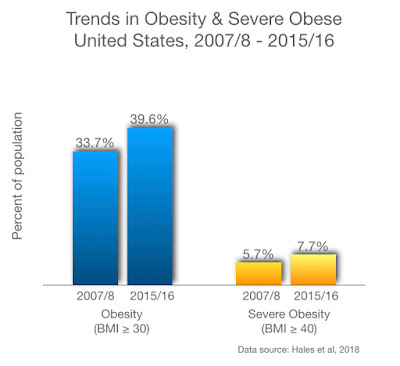The one silver lining of the new report is that obesity in youth appears to be staying relatively steady. While rates of obesity in ages 2 - 19 years increased from 16.8 percent in 2007 to 18.5 percent in 2016, it was not to a degree that reached statistical significance.
Still, the continuing trend in adult obesity remains extremely troubling - not only for individuals who suffer from increased risk of cancers, stroke, diabetes, heart disease, and lower quality of life but also for the nation as a whole that experiences higher health care costs and lost productivity.
These numbers show us how important it is to keep up our efforts to address this issue - and in new and innovative ways. We live in what many classify as an "obesigenic" society. Technology, workplaces, and infrastructure are actively designed to cut down on physical activity. And ads and other cues that surround us encourage us to overeat - and often with unhealthy choices.
Without diminishing the important innovations we've experienced as a society over the past decades, we need to harness our energy to address such unhealthy outcomes by making important changes at all levels of society - from schools and workplaces to neighborhoods and individuals to local and federal policies.



